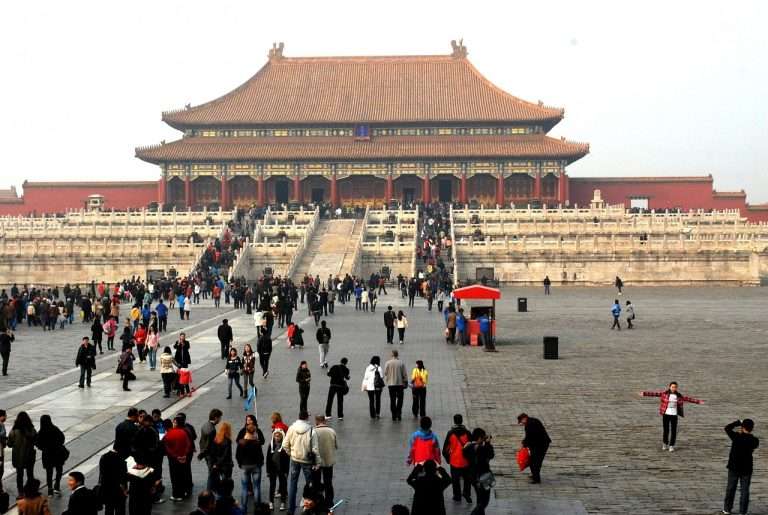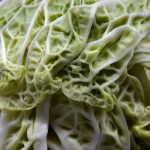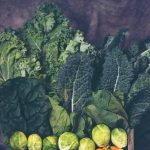Beijing, China’s capital, is a city steeped in history and culture, offering a captivating blend of ancient traditions and modern marvels. With its iconic landmarks such as the Great Wall, the Forbidden City, and the Temple of Heaven, Beijing is a must-visit destination for travelers from around the world. However, choosing the right season for your visit can greatly enhance your experience. In this article, we’ll explore the best season to visit Beijing, highlighting the unique charms and attractions each season brings.
Springtime in Beijing: A Blossoming Experience
When considering the best season to visit Beijing, spring, with its enchanting blend of mild weather, vibrant flora, and historical allure, stands out as a prime choice. From March to May, Beijing undergoes a transformation that beckons travelers from around the world to explore its cultural treasures and natural beauty.
The Weather: A Mild and Comfortable Oasis
One of the key reasons spring is hailed as the best time to visit Beijing is the climate. During this season, the city experiences a delightful shift from the harsh winter chill to a much more pleasant and comfortable environment. Temperatures in spring typically range from 10°C (50°F) to 25°C (77°F), creating a mild and inviting atmosphere.
After the cold and dry winter months, the warmth of spring is truly welcomed. The gentle breeze carries a sense of renewal as it sweeps through the city, heralding the arrival of a new season. This moderate climate allows visitors to explore Beijing’s attractions without the discomfort of extreme temperatures. Whether you are wandering through historic sites, enjoying outdoor activities, or simply strolling through the city streets, spring provides an ideal backdrop for your adventures.
A Floral Wonderland: Cherry Blossoms and More
One of the most captivating aspects of spring in Beijing is the blooming of cherry blossoms and other vibrant flowers. As the city sheds its winter coat, parks and gardens burst into a riot of colors. This natural spectacle transforms Beijing into a visual paradise, making it a haven for photographers and nature enthusiasts alike.
Cherry blossoms, in particular, steal the show during springtime. These delicate, pale-pink petals create a mesmerizing contrast against the city’s ancient architecture and modern skyline. Locals and tourists alike flock to Beijing’s parks to witness this ephemeral beauty. Two notable locations to experience the cherry blossom extravaganza are Yuyuantan Park and the Summer Palace.
Yuyuantan Park: A Blossom-Adorned Oasis
Yuyuantan Park, nestled in the western part of Beijing, is a renowned spot for cherry blossom viewing. The park spans an impressive 136 hectares and features a serene lake that reflects the blossoms’ beauty, creating a picturesque scene. The park is home to more than 2,000 cherry trees, comprising various species, which ensures a prolonged blooming period. Visitors can enjoy leisurely walks along the paths that wind through the park, capturing the essence of spring in every frame.
The Summer Palace: Where Royalty and Cherry Blossoms Converge
The Summer Palace, a UNESCO World Heritage Site, is another must-visit destination during spring in Beijing. This grand imperial garden is not only famous for its stunning architecture but also for its stunning cherry blossoms. As you explore this vast complex of palaces, pavilions, and gardens, you’ll encounter cherry trees in full bloom, creating an ethereal and romantic atmosphere.
Strolling around the Kunming Lake, you can bask in the beauty of the cherry blossoms while admiring the intricacies of the Longevity Hill and the Tower of Buddhist Incense. The blend of nature and architecture at the Summer Palace offers a quintessential Beijing experience during the spring season.
Historical Wonders: The Forbidden City and the Temple of Heaven
While spring in Beijing is celebrated for its natural beauty, it also provides the perfect climate for exploring the city’s historical sites and landmarks. The Forbidden City and the Temple of Heaven, two of Beijing’s most iconic attractions, are particularly enchanting during this season.
The Forbidden City: An Imperial Gem in Spring Attire
The Forbidden City, officially known as the Palace Museum, is a remarkable testament to China’s imperial history. This vast complex of palaces and courtyards becomes even more enchanting as the chill of winter recedes, and spring’s warmth awakens the city.
Wandering through the Forbidden City in spring feels like stepping back in time. As cherry blossoms bloom and vibrant flowers add splashes of color to the surroundings, the palace’s intricate architecture stands in striking contrast. The tranquility of the season enhances the sense of grandeur that the Forbidden City exudes.
The Temple of Heaven: A Springtime Spiritual Retreat
The Temple of Heaven, a masterpiece of Ming Dynasty architecture, takes on a special charm in spring. This sacred site was once the place where emperors of the Ming and Qing dynasties performed rituals to ensure a bountiful harvest. The park surrounding the temple becomes a haven of serenity during spring, making it an ideal spot for meditation and reflection.
As you explore the grounds of the Temple of Heaven, you’ll encounter ancient cypress trees and towering pine trees, which provide a lush green backdrop to the colorful blooms of spring. The Hall of Prayer for Good Harvests, with its striking triple-tiered wooden roof, looks even more majestic when framed by blossoming trees.
Crowds and Considerations: Navigating Springtime Tourism
While spring undoubtedly offers an array of delights in Beijing, it’s essential to be prepared for some crowds. This season is one of the most popular times for tourists to visit the city due to its comfortable weather and natural beauty. As such, popular attractions like the Forbidden City, the Temple of Heaven, and cherry blossom viewing spots can get crowded.
To make the most of your spring visit to Beijing, consider the following tips:
- Plan Ahead: Research the opening hours of attractions and purchase tickets in advance when possible to minimize wait times.
- Visit Early: Arrive at popular sites early in the day to beat the crowds and enjoy a more peaceful experience.
- Midweek Visits: If your schedule allows, consider visiting attractions on weekdays when they tend to be less crowded compared to weekends.
- Local Insights: Consult with locals or tour guides for insider tips on the best times to visit popular sites.
- Patience: Embrace the crowds as part of the experience, and remember that the beauty of spring in Beijing is worth it.
In conclusion, spring in Beijing is a season that offers a harmonious blend of nature’s beauty and historical grandeur. The mild and comfortable weather, along with the breathtaking cherry blossoms and historical landmarks, make it an ideal time to explore this captivating city. Whether you’re a history buff, a nature enthusiast, or simply a traveler seeking a memorable experience, spring in Beijing promises to leave an indelible mark on your journey through China’s rich cultural heritage.
Summer in Beijing: A Sizzling Celebration of Culture and Cuisine
Summer in Beijing, spanning from June to August, is a season of vibrant festivities, warm days, and a lively street atmosphere. While the city’s temperature rises during these months, ranging from 20°C (68°F) to 35°C (95°F), it ushers in a unique array of experiences that make it an attractive choice for travelers. From colorful cultural celebrations to indulging in delectable street food, summer in Beijing offers a memorable and dynamic journey into the heart of Chinese culture.
Festivals Galore: Embracing Chinese Traditions
One of the highlights of summer in Beijing is the celebration of traditional Chinese festivals, which provide insight into the country’s rich cultural heritage. Among these, the Dragon Boat Festival stands out as a must-experience event.
Dragon Boat Festival: A Splash of Tradition
The Dragon Boat Festival, also known as Duanwu Festival, is celebrated on the fifth day of the fifth month of the Chinese lunar calendar, typically falling in June. This festival has a history dating back over 2,000 years and is marked by a series of unique customs.
A central feature of the Dragon Boat Festival is the dragon boat races. Teams of rowers paddle long, narrow boats decorated like dragons in a thrilling competition. The spectacle of these races is a true crowd-pleaser, combining athleticism, teamwork, and a festive atmosphere. Spectators can feel the adrenaline rush as they watch these colorful boats slice through the water, and the cheers of the crowd add to the excitement.
Another integral part of the Dragon Boat Festival is the consumption of zongzi, pyramid-shaped rice dumplings wrapped in bamboo leaves. These dumplings are typically filled with various ingredients, such as sticky rice, meats, and beans, and are a delicious and symbolic treat enjoyed during the festival. Sampling zongzi from a local vendor is a culinary experience not to be missed during your summer visit to Beijing.
Beijing International Beer Festival: A Modern Summer Tradition
For those who prefer a more contemporary celebration, the Beijing International Beer Festival is a highlight of the summer season. This annual event, typically held in August, has become one of Asia’s largest beer festivals and a hotspot for beer enthusiasts from around the world.
The Beijing International Beer Festival offers a diverse selection of beers, both domestic and international, allowing visitors to sample a wide range of brews. You can explore various beer gardens, each offering its own unique atmosphere and selection of beers. It’s an opportunity to discover and appreciate the evolving craft beer scene in China while mingling with fellow beer aficionados.
Apart from beer, the festival features live music performances, cultural displays, and food stalls serving a variety of international and local cuisine. The lively and convivial atmosphere makes it a great place to unwind and socialize, creating lasting memories of your summer trip to Beijing.
Outdoor Adventures: Embracing the Warmth of Summer
Summer in Beijing offers ideal conditions for outdoor activities, from exploring historical landmarks to hiking along the iconic Great Wall. The long daylight hours and warm temperatures make it an opportune time to embark on adventures that immerse you in the city’s culture and natural beauty.
Hiking on the Great Wall: Conquering Ancient Heights
The Great Wall of China, one of the most iconic structures in human history, is a bucket-list destination for travelers visiting Beijing. Summer presents an excellent opportunity to conquer this architectural marvel and witness breathtaking vistas along the way.
While there are several sections of the Great Wall accessible from Beijing, such as Badaling and Mutianyu, the Jiankou and Jinshanling sections are particularly popular for their stunning landscapes and fewer crowds. Hiking on the Great Wall in the summer allows you to appreciate the grandeur of this ancient fortification while enjoying panoramic views of lush green mountains and valleys.
It’s essential to start your hike early in the morning to avoid the midday heat, especially during the peak of summer. Be sure to wear comfortable clothing, sturdy hiking shoes, and carry sufficient water to stay hydrated as the sun can be intense. The experience of walking on a structure that has witnessed centuries of history and marveling at the surrounding natural beauty is a truly unforgettable adventure.
Exploring Beijing’s Hutongs: Navigating Narrow Alleyways
In contrast to the grandeur of the Great Wall, Beijing’s hutongs offer a glimpse into the city’s historic neighborhoods and local way of life. Hutongs are narrow alleyways flanked by traditional courtyard houses, and they provide a charming contrast to the city’s modernity.
Summer is an excellent time to explore these labyrinthine alleys, as the warmer weather encourages residents to spill out onto the streets, creating a lively atmosphere. Walking through hutongs, you’ll encounter traditional courtyard homes, vibrant street art, boutique shops, and quaint tea houses.
One of the most famous hutong areas is Nanluoguxiang, a bustling alleyway filled with boutique stores, restaurants, and souvenir shops. As you wander through these winding alleys, you can immerse yourself in the local culture and perhaps strike up a conversation with friendly residents who call these historic neighborhoods home.
Savoring Street Food Delights: A Culinary Adventure
Summer in Beijing is synonymous with savoring a wide array of delectable street food offerings. As you explore the city’s bustling streets and markets, you’ll encounter an abundance of tantalizing treats that showcase the diversity of Chinese cuisine.
Jianbing: A Savory Crispy Crepe
Jianbing, a popular street food, is a must-try delicacy that perfectly embodies the essence of Beijing’s street food culture. It consists of a thin, crispy crepe made from a mixture of wheat and mung bean flour, which is spread thinly on a griddle. The crepe is then topped with a variety of ingredients, such as eggs, scallions, cilantro, and a choice of sauces, creating a delightful combination of textures and flavors.
Watching the skilled street vendors prepare jianbing is an experience in itself. The crepe is flipped with remarkable dexterity and folded into a portable package that’s perfect for eating on the go. You’ll find jianbing stalls scattered throughout the city, making it a convenient and delicious snack to enjoy during your summer explorations.
Lamb Skewers: A Flavorful Delight
Another iconic street food in Beijing is lamb skewers, known locally as yangrouchuan. These succulent skewers feature bite-sized pieces of marinated lamb, threaded onto skewers, and grilled to perfection. They are often seasoned with a blend of spices, including cumin, chili flakes, and Sichuan peppercorns, resulting in a flavorful and slightly spicy treat.
The aroma of sizzling lamb skewers wafts through Beijing’s streets, enticing passersby with its irresistible scent. You can find these savory delights at street food stalls and barbecue vendors throughout the city, especially in popular areas like Wangfujing Snack Street.
Stay Hydrated and Sun-Smart: Coping with the Summer Heat
While summer in Beijing offers a wealth of experiences, it’s important to be prepared for the warmer temperatures and higher humidity levels. Here are some tips to ensure a comfortable and enjoyable visit:
1. Hydration is Key: Given the heat and humidity, staying well-hydrated is essential. Carry a refillable water bottle and drink plenty of fluids throughout the day.
2. Sunscreen and Sun Protection: Apply sunscreen with a high SPF rating to protect your skin from the strong summer sun. Wearing a wide-brimmed hat and sunglasses can also help shield you from the sun’s rays.
3. Light Clothing: Opt for lightweight and breathable clothing to stay cool and comfortable. Consider wearing moisture-wicking fabrics that help manage sweat.
4. Time Your Outdoor Activities: Plan outdoor activities for the early morning or late afternoon to avoid the heat of midday. This is especially important if you plan to hike or explore the Great Wall.
5. Take Breaks: If you’re out and about during the hottest parts of the day, take breaks in shaded areas to rest and cool down.
6. Acclimatize Gradually: If you’re coming from a cooler climate, allow your body to acclimatize gradually to the heat by taking it easy during the first few days of your trip.
In conclusion, summer in Beijing offers a vibrant and culturally rich experience. From traditional festivals like the Dragon Boat Festival to modern celebrations like the Beijing International Beer Festival, this season provides a glimpse into the diverse tapestry of Chinese culture. With outdoor adventures, historical explorations, and an array of delectable street food, summer in Beijing offers an unforgettable journey that captures the essence of this captivating city. Just remember to stay hydrated, protect yourself from the sun, and savor the unique flavors of Beijing’s street cuisine to make the most of your summer visit.
Beijing in Autumn: A Symphony of Colors and Cultural Traditions
Autumn in Beijing, extending from September to November, emerges as one of the most enchanting seasons to explore the city. During this time, Beijing undergoes a remarkable transformation as the weather remains pleasantly mild, with temperatures ranging from 15°C (59°F) to 25°C (77°F). The real star of the season, however, is the breathtaking display of golden and red foliage that graces the city’s parks and trees. Moreover, autumn brings with it one of Beijing’s most significant cultural celebrations – the Mid-Autumn Festival. In this article, we delve into the many facets of Beijing in autumn, from the mesmerizing natural landscapes to the vibrant cultural traditions that make it an ideal season for a visit.
The Weather: A Mild and Inviting Oasis
Autumn is a season of transition in Beijing, offering a welcome relief from the sweltering heat of summer and the biting cold of winter. The moderate temperatures during this time, ranging from 15°C (59°F) to 25°C (77°F), create a comfortable and inviting climate for travelers.
As the season unfolds, the crispness of the air carries a sense of change and anticipation. The stifling heat of summer gradually gives way to cooler breezes, and the cityscape becomes adorned with hues of gold and red as leaves change color. With pleasant weather, clear skies, and comfortable temperatures, autumn beckons visitors to explore Beijing’s rich cultural heritage and natural wonders without the extreme weather conditions that can affect other seasons.
Foliage Spectacle: Beijing’s Golden Autumn
One of the most captivating aspects of autumn in Beijing is the stunning foliage that envelops the city. As the days grow shorter and temperatures begin to drop, the leaves of Beijing’s trees and parks undergo a spectacular transformation. Vibrant shades of red, orange, and gold dominate the landscape, creating a picturesque setting for travelers and nature enthusiasts.
Fragrant Hills Park: A Symphony of Autumn Colors
When it comes to experiencing the mesmerizing autumn foliage, Fragrant Hills Park, or Xiangshan Park, is an absolute must-visit destination in Beijing. Located to the northwest of the city center, this sprawling park covers an extensive area of approximately 1,600 acres and is famous for its breathtaking displays of fall foliage.
The name “Fragrant Hills” is derived from the park’s lush vegetation, which includes fragrant trees and plants like pine, cypress, and smoke trees. As autumn arrives, these trees transform into a vibrant tapestry of colors, making Fragrant Hills Park one of the most popular spots for autumn leaf-peeping in Beijing.
Visitors to the park can explore a network of hiking trails and pathways that lead to scenic viewpoints. Among the park’s notable attractions is the Red Leaf Viewing Area, where crimson maple trees take center stage during the fall season. The sight of the winding paths surrounded by fiery red leaves and the backdrop of traditional Chinese architecture is nothing short of breathtaking.
Historical Charm: The Forbidden City in Autumn Attire
While the natural beauty of autumn takes center stage, the historical landmarks of Beijing don their autumnal attire, creating a striking contrast with the changing leaves. Among these landmarks, the Forbidden City stands out as a timeless example of imperial grandeur.
The Forbidden City, officially known as the Palace Museum, is a UNESCO World Heritage Site and an enduring symbol of China’s imperial history. This vast complex of palaces and courtyards is set against a backdrop of red and gold leaves during the autumn season, adding an extra layer of splendor to its architecture.
Wandering through the Forbidden City in autumn is akin to stepping into a painting. The muted, earthy tones of the ancient buildings harmonize with the fiery colors of the surrounding foliage, creating a sense of timelessness and elegance. Exploring the palace complex during this season offers a unique opportunity to immerse oneself in the historical and natural beauty of Beijing simultaneously.
The Mid-Autumn Festival: A Cultural Highlight
Beyond the picturesque landscapes, autumn in Beijing is also marked by one of the city’s most important cultural celebrations – the Mid-Autumn Festival, also known as the Moon Festival. This festival typically falls on the 15th day of the eighth month of the Chinese lunar calendar, which corresponds to September or early October in the Gregorian calendar.
Mooncakes, Lanterns, and Family Reunions
The Mid-Autumn Festival holds great significance in Chinese culture and is a time for family gatherings and the expression of gratitude. The festival is deeply rooted in legends and traditions, and several customs are associated with it.
One of the most iconic aspects of the Mid-Autumn Festival is the consumption of mooncakes, a type of pastry filled with various ingredients such as lotus seed paste, red bean paste, and salted egg yolks. Mooncakes are often intricately decorated with patterns and motifs that symbolize unity and good fortune. Sharing mooncakes with family and friends is a way to express love and good wishes.
Lanterns are another integral part of the Mid-Autumn Festival, and they are often released into the night sky to symbolize the hope for a bright and prosperous future. In Beijing, you can witness beautiful lantern displays in parks and public spaces, adding to the festive atmosphere.
Moon Viewing: A Tranquil Tradition
Another beloved tradition during the Mid-Autumn Festival is moon viewing. Families and friends gather in parks, gardens, and other scenic locations to admire the full moon, which is believed to be at its roundest and brightest during this time. The moon is seen as a symbol of reunion and completeness, and its gentle glow is said to bring harmony and happiness.
One of the best places to partake in moon viewing festivities in Beijing is Houhai Lake. Located in the heart of the city, Houhai Lake is surrounded by traditional hutongs, restaurants, and bars. During the Mid-Autumn Festival, the lake’s surroundings come alive with colorful lanterns, live music performances, and families picnicking by the water’s edge. Strolling along the illuminated lakeside paths and gazing at the full moon reflecting on the water creates a tranquil and memorable experience.
Exploring Autumn in Beijing: Practical Tips
To make the most of your autumn visit to Beijing and fully immerse yourself in its seasonal charm, consider the following practical tips:
1. Timing is Key: Plan your trip to Beijing during the peak of autumn foliage, typically from mid-September to mid-October, for the most vibrant colors.
2. Pack Accordingly: Bring clothing suitable for mild autumn weather, including layers for cooler evenings.
3. Plan for Crowds: As autumn is a popular season for tourism, especially during the Mid-Autumn Festival, be prepared for crowds at popular attractions. Arrive early to avoid long lines.
4. Learn About Local Customs: Familiarize yourself with the customs and traditions of the Mid-Autumn Festival to fully appreciate the cultural significance of the season.
5. Capture the Moment: Don’t forget your camera to capture the stunning autumn landscapes and the festivities of the Mid-Autumn Festival.
In conclusion, autumn in Beijing is a season of unparalleled beauty and cultural richness. As the city’s foliage transitions to a symphony of gold and red, and as the Mid-Autumn Festival illuminates the city with lanterns and moonlight, Beijing offers a captivating and immersive experience for travelers. Whether you’re an admirer of natural beauty, a history enthusiast, or simply someone seeking a deeper connection to Chinese culture, autumn in Beijing promises an unforgettable journey through the heart of China’s rich traditions and landscapes.
Embracing Winter’s Charm in Beijing: A Unique and Tranquil Experience
Winter in Beijing, spanning from December to February, is often overlooked as a prime time to visit due to its chilly temperatures. Yet, this season unveils a different, quieter side of the city, offering unique experiences and a chance to explore Beijing’s rich cultural heritage without the crowds that throng popular tourist sites during other seasons. As the city adorns itself with sparkling lights and ushers in the festive spirits of Christmas and the Chinese New Year, Beijing in winter becomes a magical wonderland that merits exploration. In this comprehensive guide, we’ll delve into the unique attractions and experiences that make winter a hidden gem in Beijing’s annual calendar.
Winter Weather: Embracing the Chill
The winter season in Beijing is characterized by cold temperatures that range from -8°C (17°F) to 5°C (41°F). While the chill in the air can be daunting for some, it creates a unique ambiance that sets the stage for memorable experiences. The crispness of winter air refreshes the senses and beckons travelers to explore the city in a different light.
The cold weather in Beijing also offers an opportunity to indulge in cozy winter attire – from stylish coats and scarves to fashionable hats and gloves. While layering up is essential for comfort, it also adds an element of winter fashion, allowing you to blend in with the locals and truly embrace the season.
Festive Atmosphere: Christmas and Chinese New Year
One of the most enchanting aspects of winter in Beijing is the festive atmosphere that sweeps through the city, encompassing both Christmas and the Chinese New Year. The decorations and celebrations during this time bring a sense of joy and wonder to the streets of Beijing.
Christmas Celebrations: Western Traditions in Beijing
Christmas is celebrated with enthusiasm in Beijing, especially in shopping districts and commercial areas. While it’s not a traditional Chinese holiday, it has gained popularity over the years, and you’ll find streets adorned with twinkling lights, festive decorations, and themed displays.
Wangfujing, one of Beijing’s most famous shopping streets, is transformed into a winter wonderland during the Christmas season. The towering Christmas trees, dazzling light displays, and shops offering holiday-themed merchandise create a magical atmosphere that’s perfect for strolling and taking in the festive spirit.
Many restaurants and cafes also offer special Christmas menus, making it an ideal time to savor international and fusion cuisine. If you’re in Beijing during Christmas, consider booking a festive dinner reservation to enjoy the holiday vibes.
Chinese New Year: A Time of Tradition and Celebration
The highlight of winter in Beijing is undoubtedly the celebration of the Chinese New Year, also known as the Spring Festival. This important cultural event marks the beginning of the lunar new year and is a time for family reunions, traditions, and festivities.
As the Chinese New Year approaches, Beijing undergoes a stunning transformation with traditional decorations, bright red lanterns, and intricate paper-cut designs adorning streets and buildings. The color red, symbolizing luck and happiness, is everywhere, creating a vibrant and joyful ambiance.
During the Chinese New Year, you can immerse yourself in Beijing’s rich cultural traditions. Temples and traditional neighborhoods like the ancient hutongs come alive with vibrant parades, dragon and lion dances, and fireworks displays. The streets are filled with the sound of firecrackers, symbolizing the warding off of evil spirits and the ushering in of good luck.
One of the most cherished customs of the Chinese New Year is the giving and receiving of red envelopes (hongbao), which contain money and are given as a gesture of good fortune. The atmosphere is filled with warmth and goodwill as families exchange hongbao, and the city is abuzz with excitement.
If you’re fortunate enough to experience the Chinese New Year in Beijing, don’t miss the opportunity to visit a temple fair. These traditional fairs are held in various locations across the city and offer a glimpse into the past with traditional snacks, crafts, performances, and activities. The Temple of Earth Fair and the Ditan Temple Fair are among the most famous ones in Beijing.
Indoor Attractions: Exploring Beijing’s Cultural Treasures
Winter’s cold temperatures make it an ideal time to explore the indoor attractions that Beijing has to offer. The city boasts a wealth of museums, art galleries, historic sites, and traditional tea houses that provide insight into China’s rich cultural heritage.
The Forbidden City: Ancient Grandeur in Winter Solitude
The Forbidden City, also known as the Palace Museum, takes on a unique charm in winter. With fewer tourists braving the cold, you can explore this imperial treasure at your own pace. The silence and solitude within the vast courtyards and historic halls of the Forbidden City allow for a deeper appreciation of its architectural beauty and historical significance.
The contrast between the red walls and golden rooftops of the Forbidden City and the pristine white snow that occasionally blankets the city is a sight to behold. This juxtaposition of colors creates a serene and picturesque setting that’s perfect for photography and contemplation.
Museums and Art Galleries: A Cultural Odyssey
Beijing is home to an array of world-class museums and art galleries that cater to a wide range of interests. The National Museum of China, the Capital Museum, and the Palace Museum (inside the Forbidden City) are just a few of the city’s cultural institutions where you can explore China’s rich history, art, and artifacts.
Visiting museums and galleries in winter allows you to immerse yourself in the depth of China’s cultural heritage without the hustle and bustle of peak tourist seasons. You can spend hours admiring ancient relics, contemporary art exhibitions, and historical artifacts in the peaceful ambiance of these institutions.
Traditional Tea Houses: A Warm Respite
Escape the winter chill by indulging in a quintessential Chinese tradition – tea drinking. Beijing is home to numerous traditional tea houses where you can savor a wide variety of teas in a cozy and serene setting. Tea houses offer a respite from the cold and provide an opportunity to experience Chinese tea culture firsthand.
One of the most famous tea houses in Beijing is Maliandao Tea Street, a bustling marketplace where you can explore a vast selection of teas and tea accessories. Whether you’re a tea connoisseur or a novice, you’ll find something to suit your palate, from delicate green teas to robust black teas and aromatic herbal infusions.
Culinary Delights: Warming Winter Eats
Winter is an excellent time to savor Beijing’s famous culinary delights, which are designed to keep you warm and satisfied in the cold weather. Two dishes that you must try during your winter visit are Beijing’s famous dumplings and Peking duck.
Dumplings (Jiaozi): Comfort Food Extraordinaire
Dumplings, known as jiaozi in Chinese, are a beloved comfort food in Beijing. These bite-sized parcels of dough are typically filled with a variety of ingredients, including minced meats, vegetables, and seasonings. They can be steamed, boiled, or pan-fried, and they offer a burst of flavor and warmth that’s perfect for winter.
Dumpling restaurants are abundant in Beijing, ranging from humble family-owned establishments to upscale dining experiences. Popular dumpling fillings include pork and chives, shrimp and garlic, and mushroom and tofu, among others. Dining on piping hot dumplings while the winter wind howls outside is a quintessential Beijing experience.
Peking Duck: A Winter Classic
Peking duck is perhaps Beijing’s most iconic dish, and it’s a must-try during your winter visit. This succulent and crispy duck dish is renowned for its thin, crispy skin and tender meat. Traditionally, the duck is carved tableside and served with thin pancakes, hoisin sauce, cucumber, and scallions, allowing diners to assemble their own wraps.
While Peking duck can be enjoyed year-round, it takes on a special allure in winter. The crispy skin and succulent meat provide a satisfying contrast to the cold weather outside. Many Beijing restaurants specialize in Peking duck, with some establishments tracing their recipes and techniques back for generations.
Exploring Iconic Landmarks: A Tranquil Experience
One of the unique advantages of visiting Beijing in winter is the opportunity to explore the city’s iconic landmarks with fewer tourists. While summer and autumn attract crowds to sites like the Great Wall and the Forbidden City, winter offers a more tranquil and intimate experience.
The Great Wall: Serenity in Solitude
Hiking the Great Wall of China is a bucket-list experience, and winter provides a quieter and more contemplative visit to this iconic monument. With fewer visitors, you can relish the serenity of the Great Wall as you traverse its ancient stones and absorb the breathtaking panoramic views.
The sections of the Great Wall near Beijing, such as Mutianyu and Jinshanling, are particularly accessible during winter. The snow-covered landscape adds an extra layer of beauty to the rugged terrain, making it a picturesque and peaceful journey.
The Summer Palace: Winter Tranquility
The Summer Palace, known for its stunning lakes, pavilions, and lush gardens, offers a tranquil escape from the winter cold. While summer draws crowds to this UNESCO World Heritage Site, winter allows you to explore its beauty at a leisurely pace.
Wandering through the gardens, you’ll encounter frozen lakes and snow-covered bridges that create a serene and otherworldly atmosphere. The imperial halls and pavilions, set against a backdrop of winter foliage, exude a sense of historical grandeur.
Tips for a Winter Visit to Beijing
To make the most of your winter visit to Beijing, consider the following practical tips:
1. Dress Warmly: Layering is key. Be sure to pack warm clothing, including a winter coat, gloves, a hat, and a scarf to stay comfortable in the cold weather.
2. Embrace the Chill: While it can be cold, embrace the winter ambiance of Beijing. Enjoy the unique experiences that come with the season, from winter sports to savoring hot, comforting dishes.
3. Visit Indoor Attractions: Plan to explore Beijing’s museums, art galleries, and tea houses to stay warm and engage with the city’s rich culture.
4. Savor Local Cuisine: Make it a point to try Beijing’s winter delicacies, including dumplings and Peking duck, to warm up and indulge in the city’s culinary traditions.
5. Explore Iconic Landmarks: Take advantage of the quieter winter season to visit iconic landmarks like the Great Wall and the Forbidden City with fewer tourists.
In conclusion, winter in Beijing offers a unique and enchanting experience that’s distinct from other seasons. The festive atmosphere, cultural celebrations, and opportunities for quiet exploration make it an ideal time to visit for those who appreciate a more intimate and immersive travel experience. Whether you’re sipping hot tea in a traditional tea house, admiring the tranquil beauty of the Great Wall in the snow, or indulging in Beijing’s iconic winter dishes, the city’s winter wonderland promises unforgettable memories that will warm your heart long after your visit.






